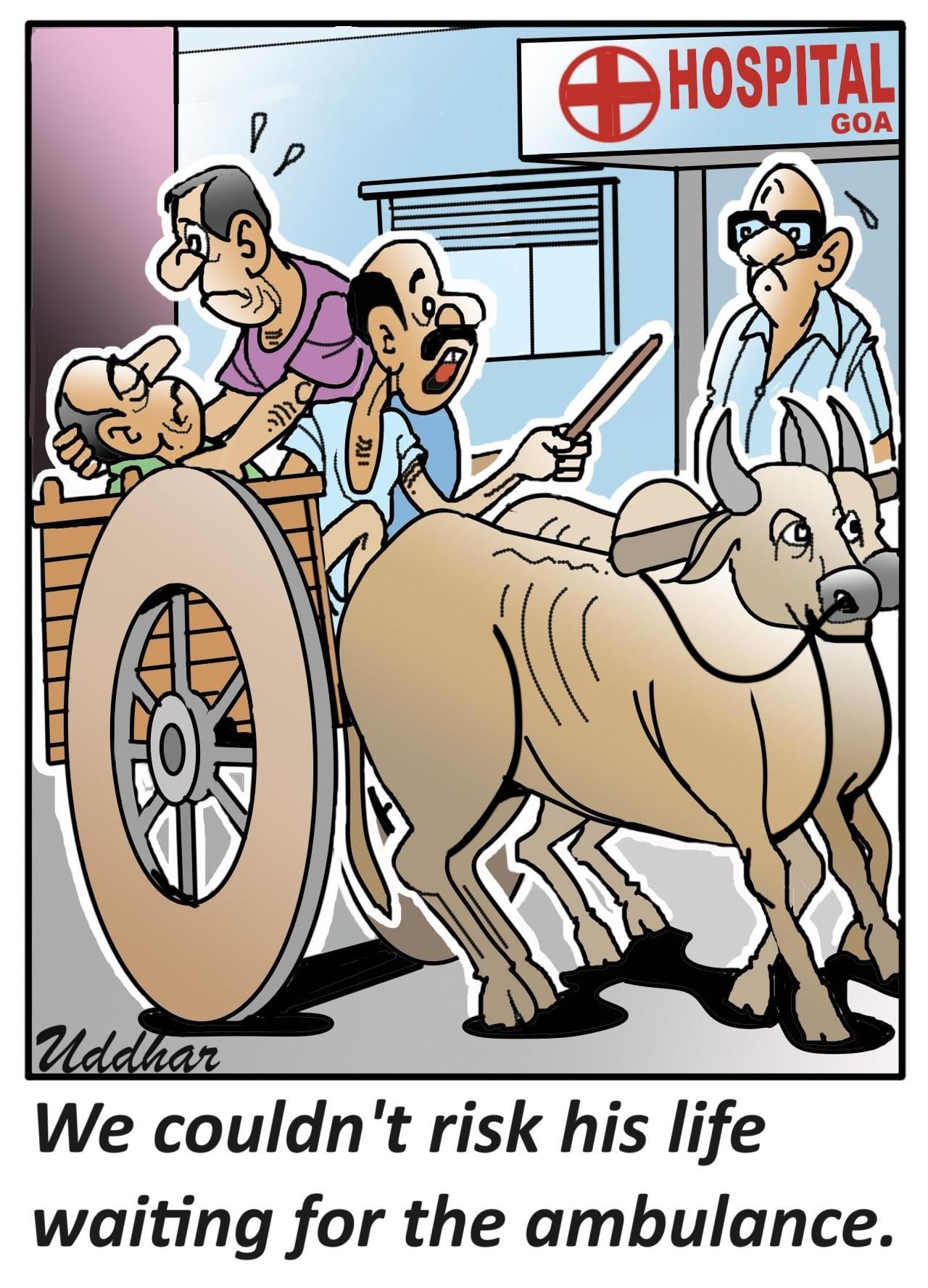It has become an everyday affair to get trapped in traffic while coming to Panjim from Margao, Ponda or Mapusa, and since the traffic on Atal Setu is currently not allowed due to the ongoing repair work, it has only added to the woes of the motorists.
The status of traffic on the internal roads of Panaji is even worse. The wheel of the public transport is literally punctured, which is why the presence of private vehicles is on rise. For the last two to four years only announcements regarding KTC acquiring the private buses to strengthen the public transport have been made but it is yet to become a reality.
Today’s politicians would not even remember that at one point, the government was thinking of providing Monorail services in the capital city.
Most people are keen on buying at least a two-wheeler once they get a job so that they reach to work on time. The policy makers are entangled whether to express joy over the boost to the economy through increase in vehicle purchase or to worry about the rise in traffic jams and climatic change. While one narrative is that the incidents of traffic congestion are due to the increasing number of private vehicles on the road, while another argument is about improving the public transport before blaming the private motorists.
The subject of roadblocks has become as common as discussing the weather, cricket and politics. The policy makers seem to have been confused over which direction to take with the sea of opinions overflowing.
Today is Gudhi Padwa and a few thousand vehicles will be bought on the occasion. If the experts are to be believed, the sales this year will be record-breaking. Given the impact the pandemic had on the automotive industry, this is a ray of hope for the industry’s revival but the same vehicles will be adding to the ever growing traffic congestion in a day’s time.
Thanks to the lack of political and administrative will, the public transport system is in a shambles. There is no one who would fight fiercely to strengthen the public transport of the State. The number of vehicles in the State has already surpassed its population. In other states there is one vehicle per house, while Goa has one vehicle per capita. The trend of buying private vehicles is slowly changing over the last two years as more preference is now given to buying the electric two-wheelers. Needless to say, Goa has carved out a different identity for itself just because of the number of vehicles existing in the State.
Bicycles were considered to be the main mode of transportation during pre and post-Liberation eras. The bicycles had to be registered and taxes had to be paid on too. There were 6,272 bicycles registered in the Panjim municipal area during 1971-72, out of which 4,737 were privately owned while 1,535 were for rental service. The total number of bicycles in the State at that time was 22,679. Today, bicycles are bought for the purpose of exercising and is seldomly used as a mode of transport. At best, teenagers use them to go to schools and tuition classes. The rise in vehicles is an indicator of the rise in earnings and standard of living of the citizens. One cannot be blamed for having the dream to own their home and a personal vehicle. It is clear as day that despite the fuel prices skyrocketing, it will not affect the sale of vehicles in Goa. There is a whole cycle that revolves around the motor business such as sales of the vehicles, various small scale businessmen providing spare parts of vehicles, the government earning revenue through the taxes, and so on. A middle ground has to be found while also maintaining the pace of this cycle.
In this backdrop, a review should be taken of the public transport system in the capital city as well as in other parts of the State. Few years back a scheme was introduced to reduce the number of vehicles entering the city. One had to park their vehicle at the multi-level parking base at the entrance of the city and would be given a coupon which would be valid for the whole day. Using this coupon, the person could then use the bus service which would go around the city in a circular manner. However, the scheme never saw the light of day and only the administration would know in which closet it must be lying now. The monorail’s work has not moved even an inch forward.
Although it is not easy to navigate through the benefits of economic development and the effects of traffic congestion at the same time, the government should at least hold a public discussion on this burning issue. Some new ideas may emerge from it to resolve the issue and people would not fear that they would be welcomed by congestion every time they visit Panjim.
